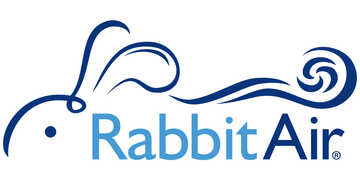
Many parents find that using both air purifiers and humidifiers together can provide the best results, ensuring the nursery is both clean and comfortably humid.
Ensuring the nursery has fresh, clean air is crucial, but should you focus on a humidifier or an air purifier? Understanding the roles of these devices can help you make an informed choice about what’s best for your little one.
What a Humidifier Does
A humidifier is a device that adds moisture to the air, which can be particularly beneficial in dry conditions. By increasing the humidity level, a humidifier helps alleviate the discomfort caused by dry air. This includes soothing dry skin, reducing static electricity, and easing dry coughs or irritated sinuses.
There are different types of humidifiers, including cool mist, warm mist, and ultrasonic models. Cool mist humidifiers are often preferred for their ability to disperse fine mist into the air without altering the room temperature.
Warm mist humidifiers, on the other hand, heat the water before releasing it into the air, which can be soothing during colder months.
Ultrasonic humidifiers use high-frequency vibrations to produce a fine mist, making them a quieter option.
When using a humidifier in a nursery, it’s important to monitor the humidity levels. Excessive moisture can lead to mold growth and dust mites, which can counteract the benefits. Maintaining a relative humidity level between 30% and 50% is generally recommended for optimal comfort.
What an Air Purifier Does
An air purifier improves indoor air quality by capturing and trapping airborne pollutants and allergens. These devices often use a combination of filters to clean the air. HEPA (High-Efficiency Particulate Air) filters are highly effective in trapping particles as small as 0.3 microns, including dust, pollen, and pet dander.
In addition to HEPA filters, some air purifiers use activated carbon filters to remove odors and gases, like smoke or volatile organic compounds (VOCs). UV-C light purifiers can also kill microorganisms like bacteria and viruses, though their effectiveness can vary.
Selecting air purifier for a nursery with a suitable Clean Air Delivery Rate (CADR) is crucial. CADR measures the volume of air cleaned per minute, so a higher CADR indicates better performance for removing specific particles. Choose an air purifier that operates quietly to avoid disturbing your baby’s sleep.
Comparing Humidifiers and Air Purifiers
While both humidifiers and air purifiers contribute to improving indoor air quality, their functions address different issues. A humidifier adds moisture to dry air, while an air purifier captures pollutants and allergens.
Functionality Comparison:
- Humidifiers: Ideal for adding moisture to dry air, which can be beneficial in preventing dry skin and respiratory issues. They also help reduce static electricity and can make breathing more comfortable if the air is too dry.
- Air Purifiers: Essential for trapping airborne pollutants like dust, pet dander, and pollen. They also address issues related to odors and gases, ensuring that the air remains fresh and clean.
Considerations for Nursery Needs:
- Humidifiers: Best used if the nursery’s air is dry or if there is a need to alleviate symptoms associated with dry air. They can help maintain a comfortable environment, especially in dry climates or during the winter months.
- Air Purifiers: Ideal for nurseries with high levels of allergens or pollutants. They are effective in capturing particles that can trigger allergies or respiratory issues. Knowing whether your air purifier produces ozone is also a consideration, which should meet maximum ozone limit regulatory requirements.
Combining Both Devices: In many cases, using both a humidifier and an air purifier can offer a comprehensive solution. The humidifier maintains the right moisture levels, while the air purifier traps pollutants and allergens. This combination can enhance the overall air quality in the nursery, making it a more comfortable space for your baby.
Which is Better for a Nursery?
Deciding whether a humidifier or an air purifier is better for a nursery largely depends on the specific issues you’re facing. If the air in the nursery is too dry and causing discomfort, a humidifier will make the air more comfortable and prevent dryness-related issues.
Conversely, if your concern is about pollutants or allergens affecting your baby, an air purifier is the better choice. Look for an air purifier that can effectively trap and capture particles, ensuring the air remains fresh and clean.
For many parents, the best solution might involve using both devices. This approach ensures that the nursery is not only free from harmful particles but also maintains a comfortable level of humidity. However, if you decide to use both, consider looking for models that have low noise levels as the combined sound of operation may disturb your little one.
In summary, both humidifiers and air purifiers offer distinct benefits for a nursery. Humidifiers address issues related to dry air, while air purifiers focus on trapping airborne pollutants and allergens. Assessing your nursery’s specific needs will help determine which device is more suitable. For optimal air quality, consider using both a humidifier and an air purifier to create a more comfortable and hygienic environment for your baby.




